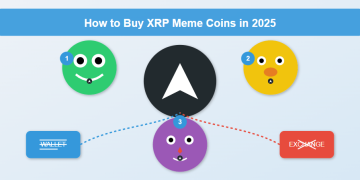Not Just for Adults: Where to Find Accessible Children’s Books for the Visually Impaired
Reading opens up a world of imagination and learning for children, but for visually impaired kids, accessing traditional books can be challenging. Fortunately, accessible children’s books are becoming more widely available, helping to bridge this gap. This article explores where parents, educators, and caregivers can find accessible children’s books for the visually impaired—proving that reading is truly for everyone.
Understanding Accessible Books for Visually Impaired Children
Accessible books are designed to be usable by children with visual impairments. These books may feature braille, large print, tactile graphics, or audio versions, ensuring that every child can enjoy stories and educational content. The goal is to promote literacy, creativity, and independence, empowering children to learn and grow through reading.
Where to Find Accessible Children’s Books
1. Specialized Libraries and Organizations
Organizations dedicated to supporting visually impaired individuals often offer extensive collections of accessible children’s books. For example:
The National Library Service for the Blind and Print Disabled (NLS): Offers braille and audio books free of charge for eligible users
These institutions usually have borrowing programs or digital libraries accessible from home.
2. Online Accessible Bookstores
Several online platforms specialize in accessible books for children:
Seedlings Braille Books for Children: Focused on braille books and tactile storybooks.
Bookshare: An accessible online library offering downloadable ebooks in braille, audio, and large print formats.
Perkins School for the Blind Bookstore: Offers tactile and braille children’s books as well as educational materials.
These platforms provide easy access to a wide variety of titles.
Exploring Different Formats of Accessible Children’s Books
1. Braille Books
Braille books allow children who are blind or have low vision to read through touch. Braille books are available in both hard copy and electronic formats (refreshable braille displays), allowing for flexibility in learning.
2. Large Print Books
Large print books use bigger fonts and high-contrast colors to aid children with partial vision. They often come with simplified layouts to make reading easier.
3. Audio Books and Storytelling Apps
For children who benefit from auditory learning, audio books and storytelling apps provide an engaging alternative. Platforms like Audible and Learning Ally have extensive children’s collections with professional narration.
4. Tactile Books
Tactile books include raised images and textures that children can feel, enhancing comprehension and sensory experience. These are particularly valuable for young readers developing fine motor skills.
Tips for Choosing the Right Accessible Book
Consider the child’s visual ability: Match the book format (braille, audio, large print) to the child’s specific needs.
Look for engaging content: Stories that are fun, educational, and age-appropriate foster a love for reading.
Check for multi-sensory elements: Books combining tactile, auditory, and visual elements provide richer learning experiences.
Consult specialists: Teachers of the visually impaired and occupational therapists can offer tailored recommendations.
Conclusion
Accessible children’s books are not just for adults or specialists—they are essential tools that open the world of stories and learning to visually impaired children. By tapping into specialised libraries, online bookstores, and exploring different formats like braille, large print, and audio, caregivers can provide enriching reading experiences for young readers with visual impairments. Every child deserves the joy of reading, and accessible books for vision impaired children ensure that vision limitations don’t hold them back.
If you’re looking to support a visually impaired child, start exploring these resources today—because the magic of reading should be available to all, regardless of age or ability.









